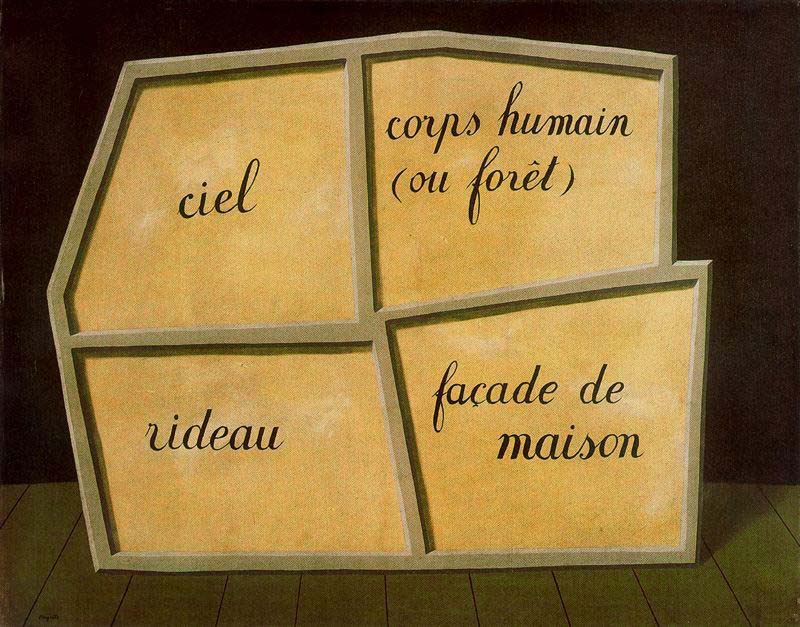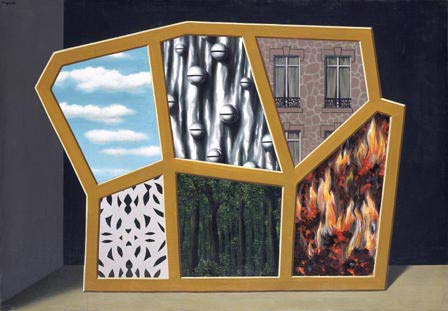| The Empty Mask | |
|---|---|
  |
|
| Artist | René Magritte |
| Year | 1928 |
| Medium | Oil on canvas |
| Location | National Museum Cardiff in Cardiff, Wales |
| Dimensions | 31.97 in × 45.75 in |
| 81.2 cm × 116.2 cm | |
| René Magritte Famous Paintings | |
| The Son of Man, 1964 | |
| The Treachery of Images, 1928–29 | |
| The Human Condition, 1933 | |
| Golconda, 1953 | |
| The Listening Room, 1952 | |
| The False Mirror, 1928 | |
| Elective Affinities, 1933 | |
| The Mysteries of the Horizon, 1955 | |
| The Empty Mask, 1928 | |
| Complete Works |
René Magritte painted The Empty Mask in 1928. In the late 1920’s, Magritte experimented with the concept of words and images. There are actually two versions of this artwork. One 4 framed picture consists simply of words on the canvas. The second and subject of this article, contains images in 5 frames. He was greatly influenced by the World War I works of Giorgio De Chirico. In 1973 this piece was purchased by the National Museum of Wales.
Interpretation
This style called for the combination of creating an image of important items and naming it with a significant title. This was an attempt to influence the viewer to compare the representation to words. The Empty Mask is displayed in a self-supported frame of an asymmetrical format. Magritte shows a sky, sleigh bells as decorations to a lead curtain, the frontage of a home, a form cut out of paper, a green forest and a blazing fire. In a 1929 essay, Magritte explains that each image contains another image.
Art Style
The Empty Mask is a symbolic painting of the Surrealist style painted in Magritte’s Surrealist years in Paris.